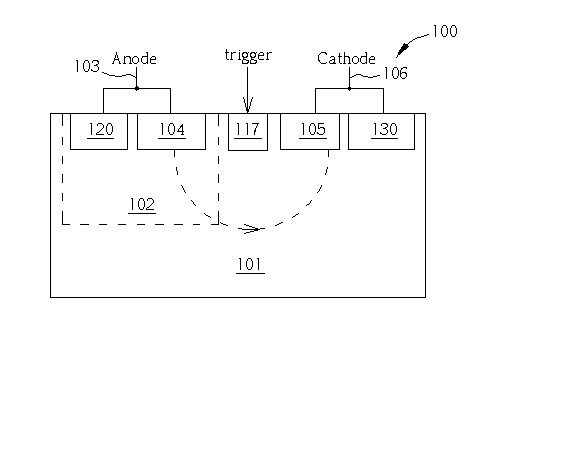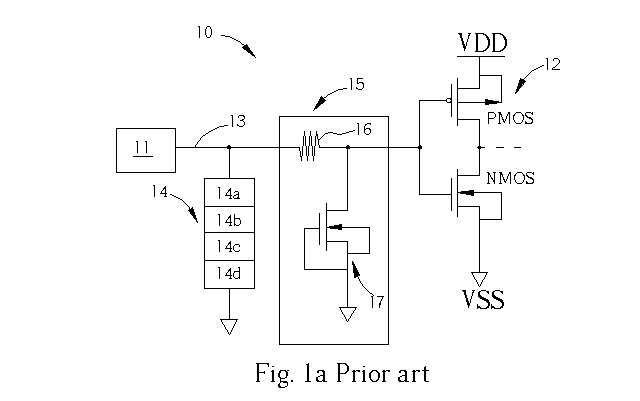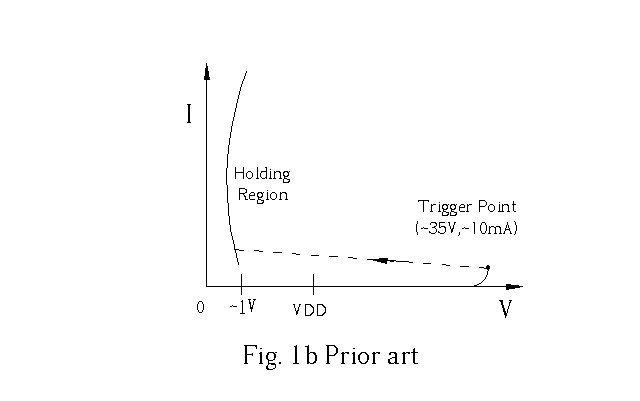Method of forming a substrate-triggered SCR device in CMOS technology
- Summary
- Abstract
- Description
- Claims
- Application Information
AI Technical Summary
Benefits of technology
Problems solved by technology
Method used
Image
Examples
Embodiment Construction
[0060] Please refer to Fig.5(a) to 5(b). Fig.5(a) is a cross-sectional schematic diagram of a P-type substrate-triggered SCR (P_STSCR) device 100 according to the present invention. Fig.5(b) is a diagram of a corresponding symbol for the P_STSCR device 100. As shown in Fig.5(a), the P_STSCR device 100 is made in a P-type silicon substrate 101. The P_STSCR device 100 comprises an N-well 102. A P.sup.+ region 104 and an N.sup.+ region 120 in the N-well 102 are electrically connected to an anode 103. A P.sup.+ region 130 and an N.sup.+ region 105 in the P-type substrate 101 are electrically connected to a cathode 106. A P.sup.+ diffusion 117 is use as a trigger node of the P_STSCR device 100. The P.sup.+ region 104, the N-well 102, the P-type substrate 101 and the N.sup.+ region 105 together form an LSCR device. When a current flows from the trigger node (i.e., the inserted P.sup.+ diffusion 117) into the P-type substrate 101, the lateral SCR is triggered on into its latch state to pro...
PUM
 Login to View More
Login to View More Abstract
Description
Claims
Application Information
 Login to View More
Login to View More - R&D
- Intellectual Property
- Life Sciences
- Materials
- Tech Scout
- Unparalleled Data Quality
- Higher Quality Content
- 60% Fewer Hallucinations
Browse by: Latest US Patents, China's latest patents, Technical Efficacy Thesaurus, Application Domain, Technology Topic, Popular Technical Reports.
© 2025 PatSnap. All rights reserved.Legal|Privacy policy|Modern Slavery Act Transparency Statement|Sitemap|About US| Contact US: help@patsnap.com



